Patagonia Lodge
05.16 – 08.16
The lodge is located within the Patagonia region, 25km north of El Chaltén, Argentina. The project took inspiration from an existing hiking trail on the site that ran from the highway, across the valley and up Mount Fitz Roy. The path was interpreted as a kind of pre-exisiting narrative on the site; a story being told through landscape. In this way, it was important for the project to coexists and honour the trail. By pulling the program apart, lodgers move between interior and exterior space, through architecture and landscape.
A couple weeks into the course of our studio, I came across a field recording by the composer Lawrence English entitled ‘Patagonia’. The piece is a 20 minute, unedited recording taken from the region.
You first hear the sound of something metallic clanging in the foreground, followed by the staggering, soft roar of the winds. In the first several minutes of the recording, the listener begins to notice the subtleties of their surroundings beneath the sound of the wind. Leaves rustling underfoot, an indiscernible object softly blows past you. As you listen closer and try to pick out the familiar sounds beyond the wind, you notice that the clanging, once very present, is now distant. The wind begins to grow louder and the rhythm, once staggered, is now strung out into a large continuous gust. You can no longer hear the clanging in the background, realizing at this point it’s source had been sheltering you from the harsh winds.
All that remains is the sound of the wind, that has become so powerful that it only resonates as a single distorted tone. The cycle is reversed and Lawrence slowly returns to the source of the clangs and takes shelter.


Chaos & Narrative
With the use of a medium as subtle as a microphone, there is the potential to turn the chaos of the Patagonia region into a an audible landscape.
In this Lawrence English’s recording we are reminded that nature is chaos, but chaos can be given a narrative.
A path in the woods is evidence of a similar narrative – it tells a story. The buildings are not simply placed on the path, but exists along it, relying on its inherit infrastructure. Instead of being a single structure, the lodge is porous; where the views, smells, and winds are used to form intermediate spaces of activity and gathering.



Sections


Plan
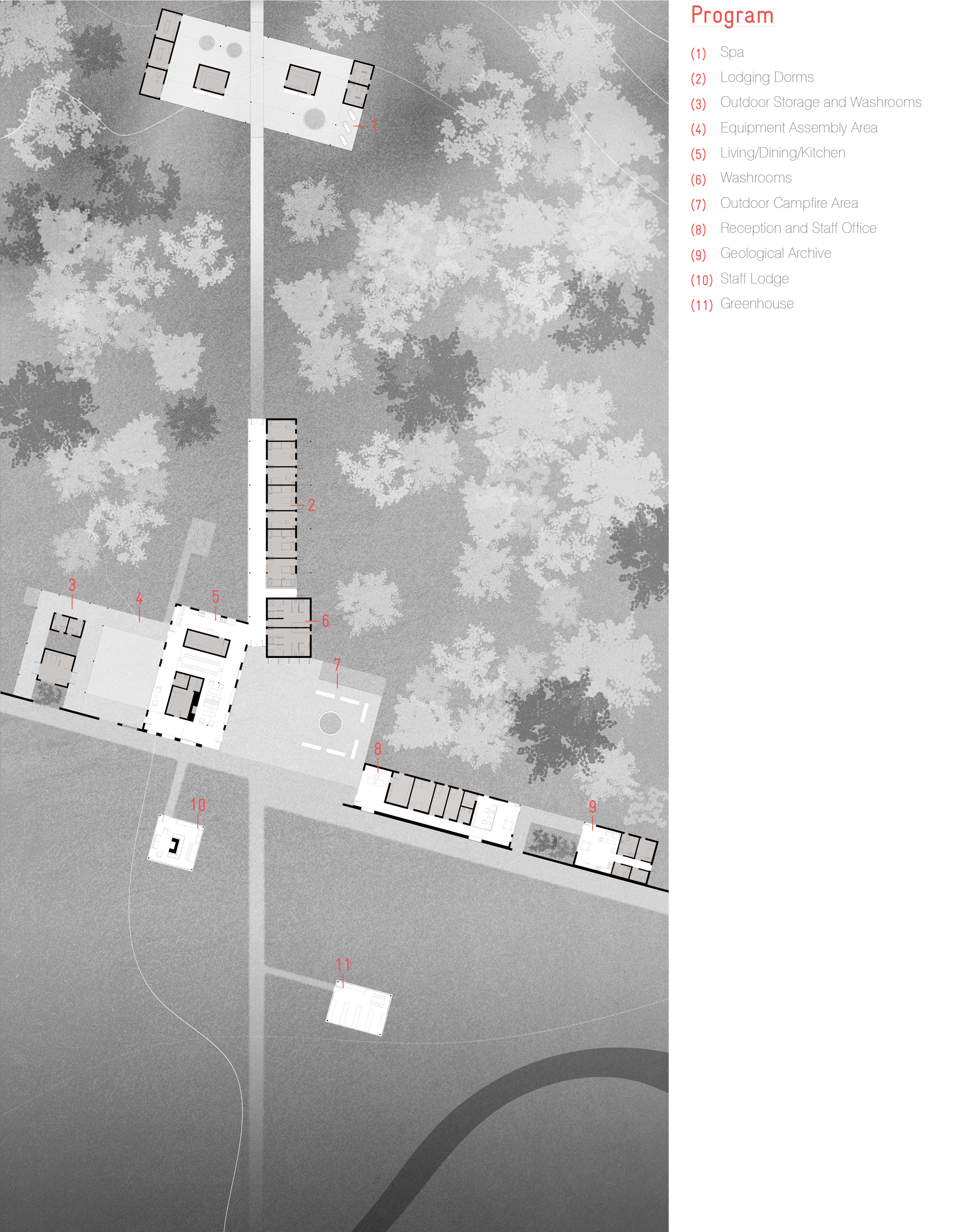
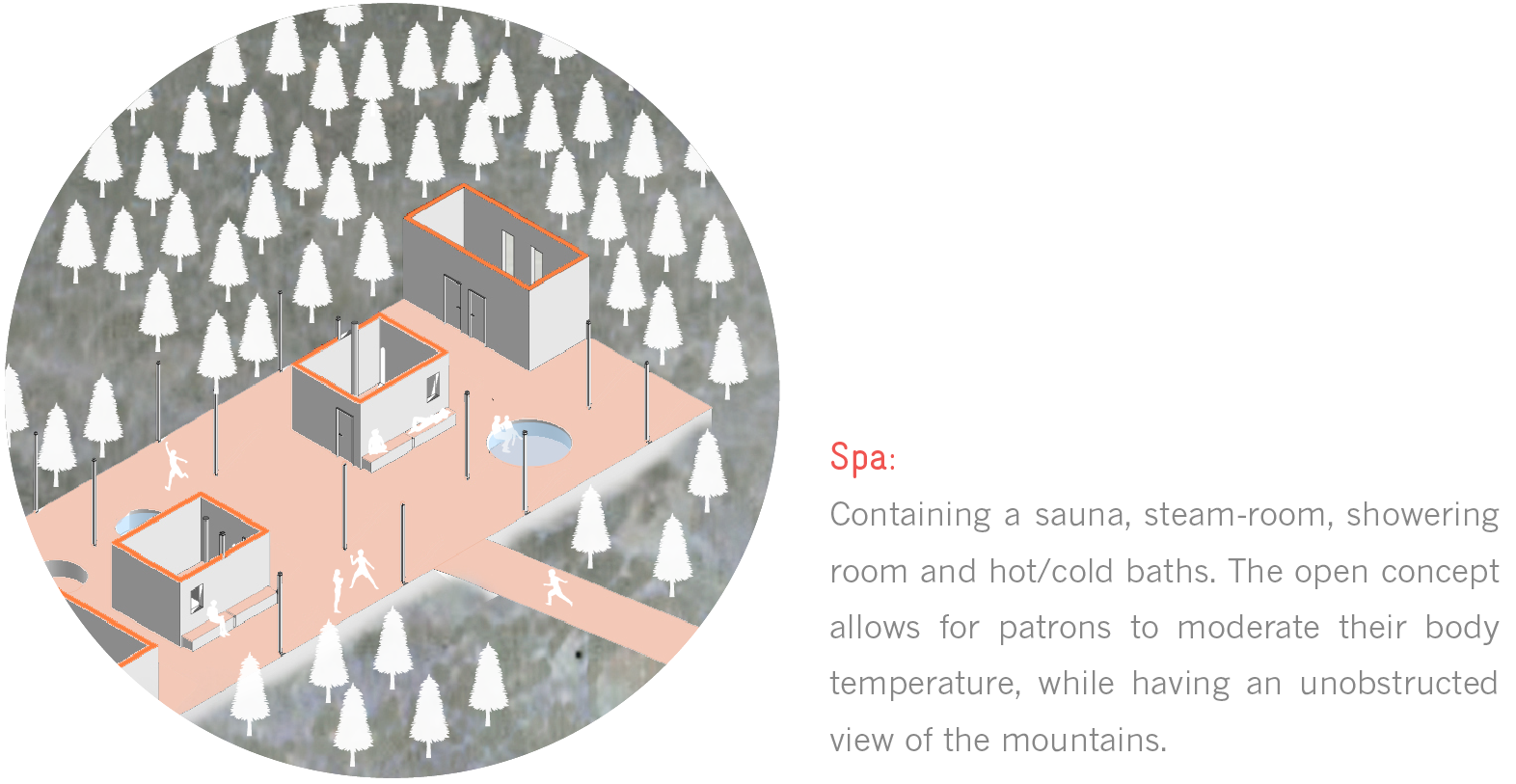
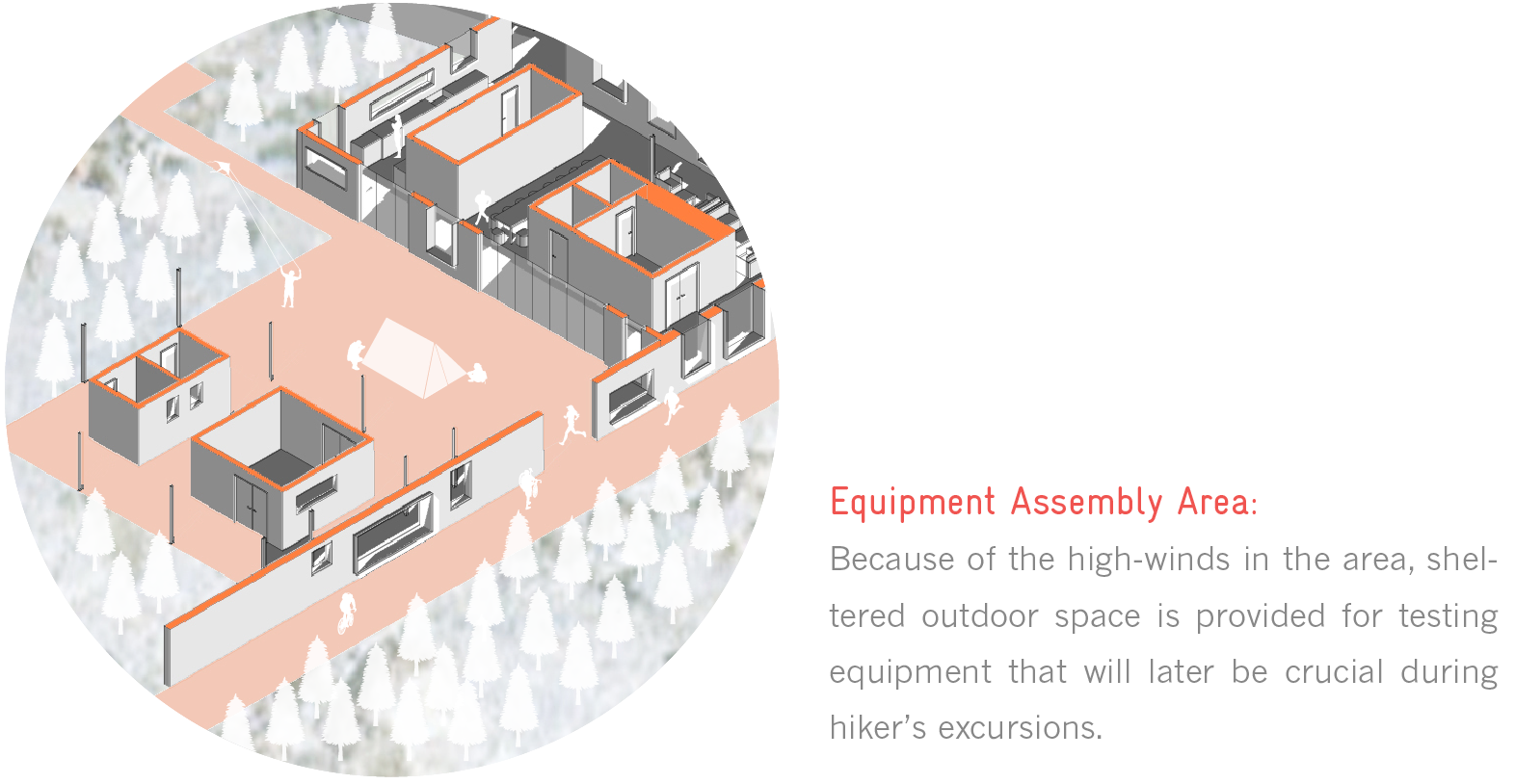
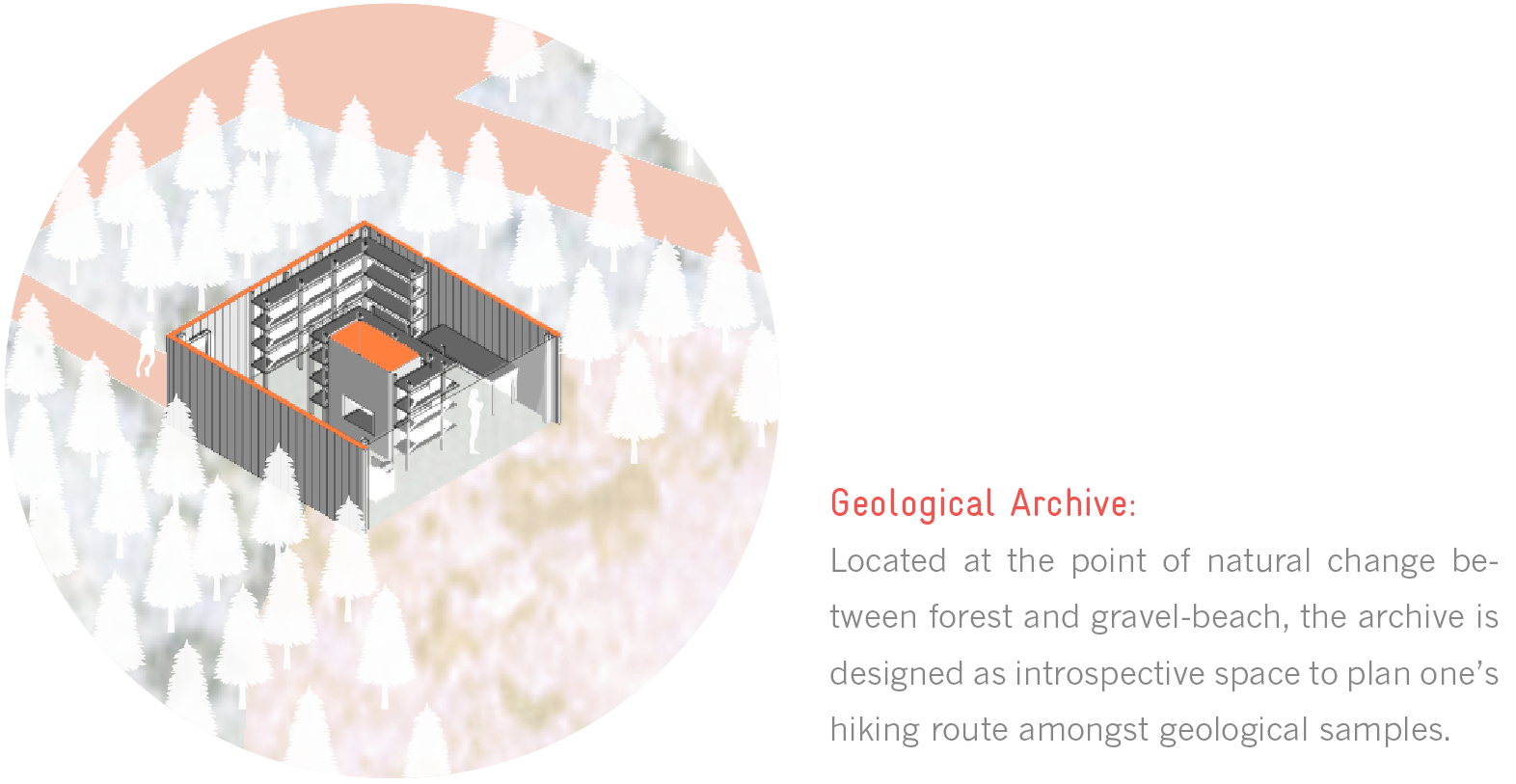
Typical Structure
The building is composed of a duel concrete and steel structural system. Due to the remote location of the project, all concrete needs to be mixed onsite. A system was developed to mini- mize the use of concrete, while still using enough to act effectively as a thermal mass. Concrete footings are cast into the shallow bedrock of the Patagonia region, and thermally insulated walls rise from the footings. In areas with larger head- room, steel columns are cast into this concrete and extend to the roof. The result is a light roof and envelope that floats above the more sub- stantial lower walls.
One of the technical difficulties of this design was creating a sleek, cantilevering roof. By running the air and vapor barriers behind the “Shock Isokorb” product, the building’s envelope can be carried through a break in the structure.
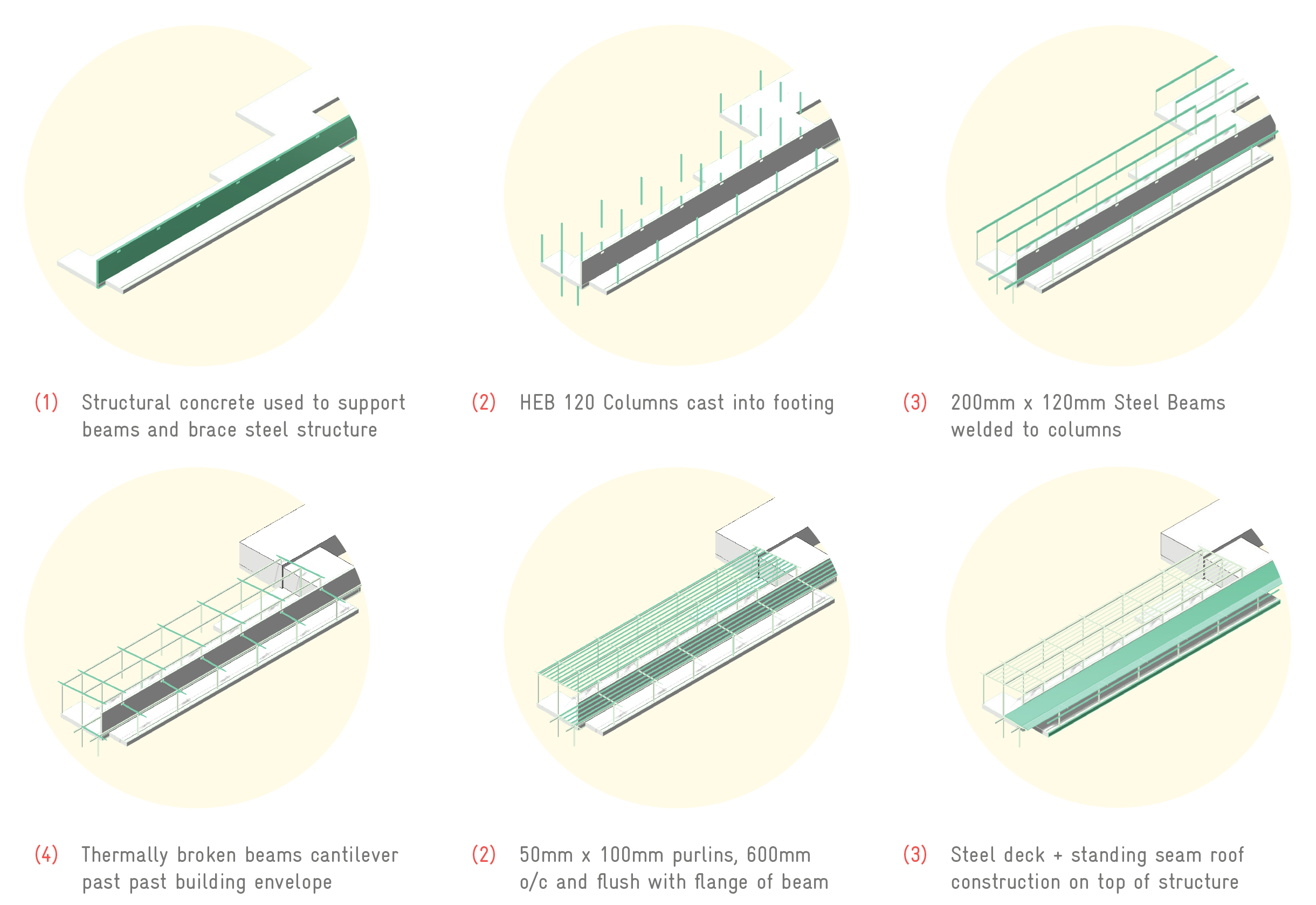
Typical Wall Section

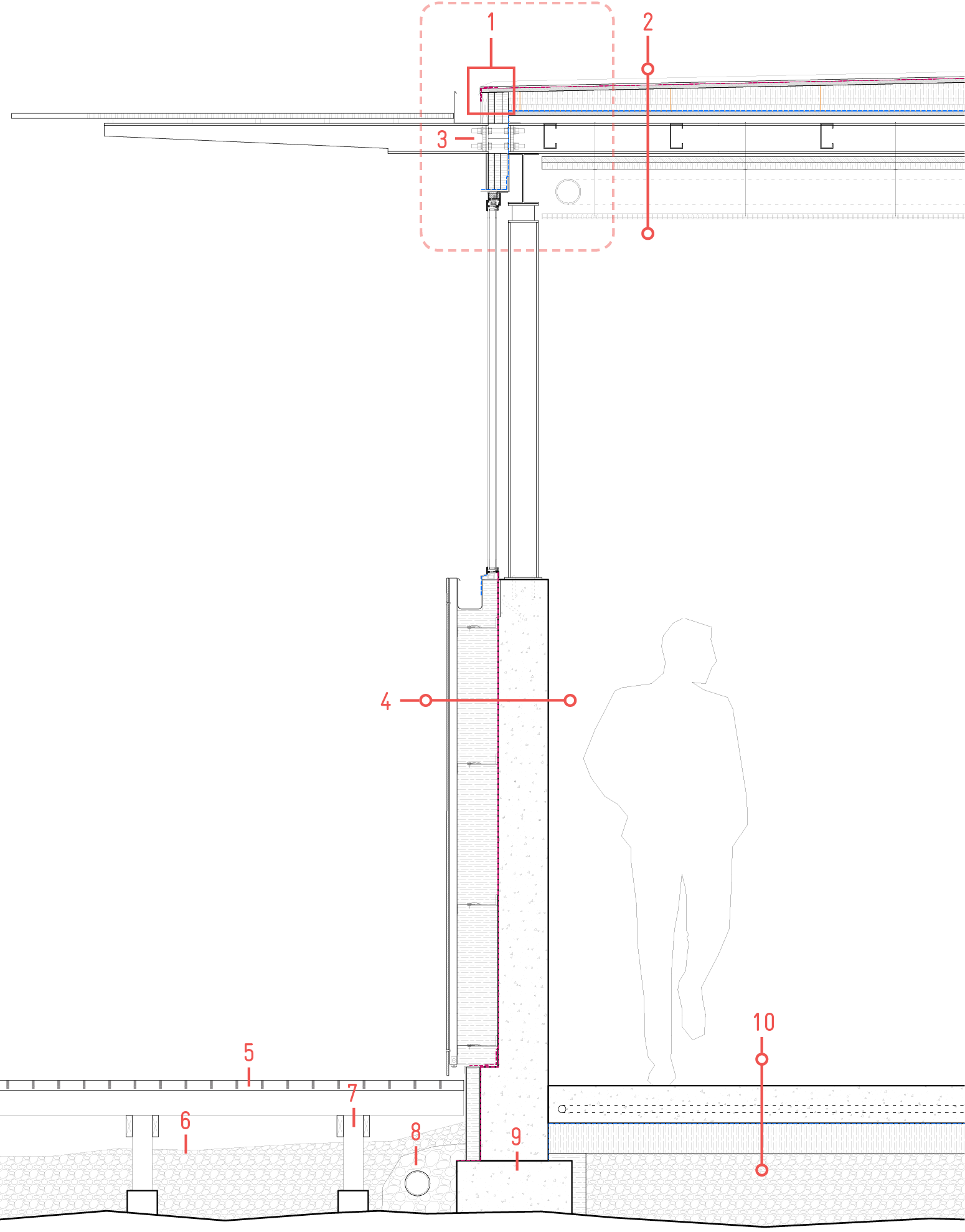
Critical Detail

